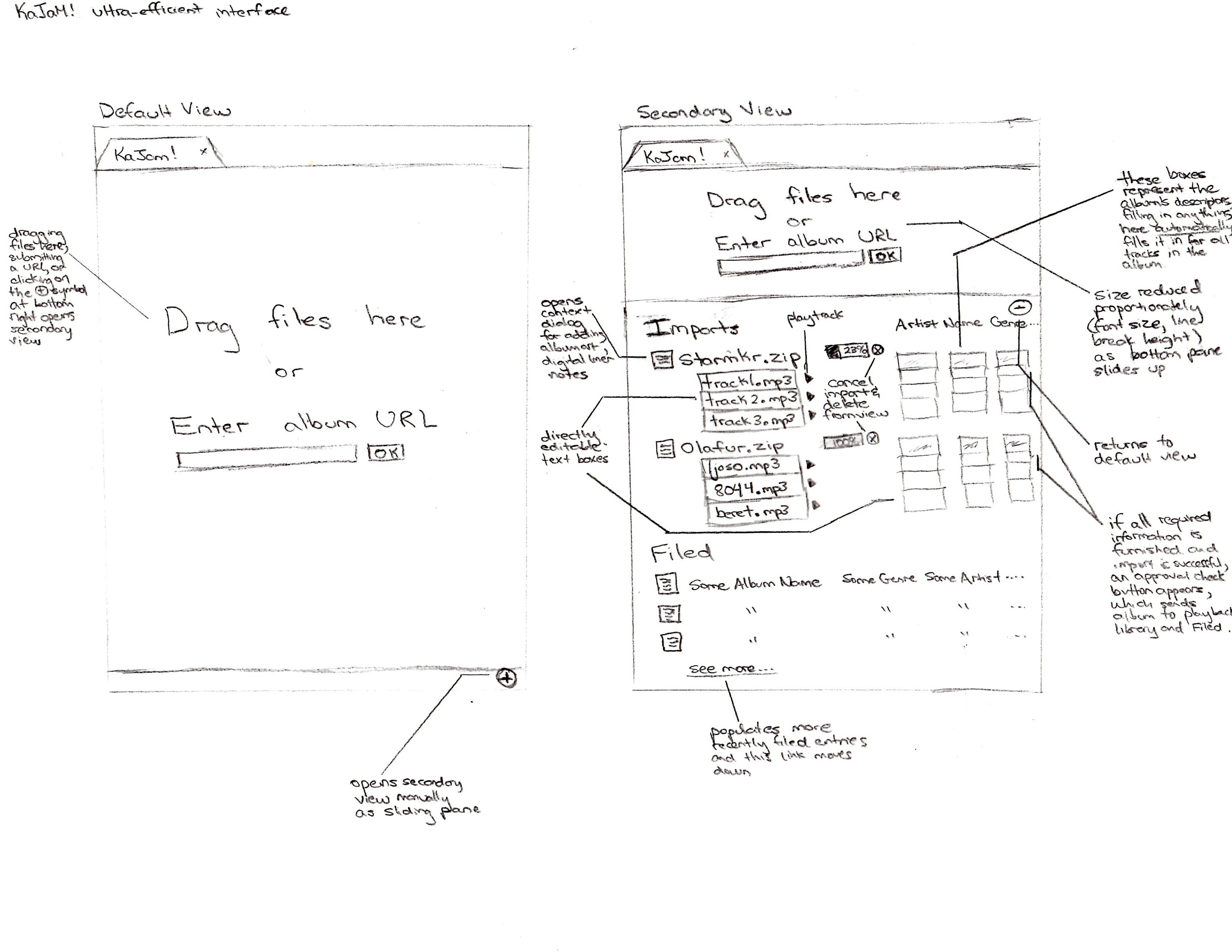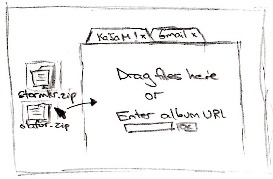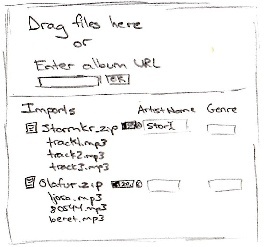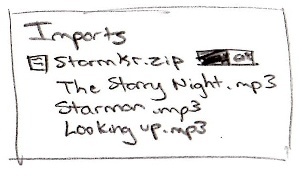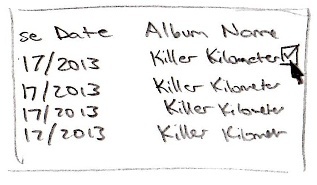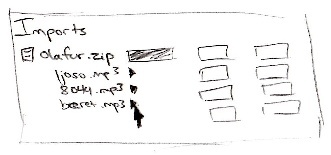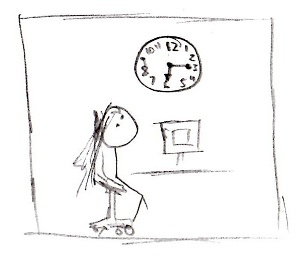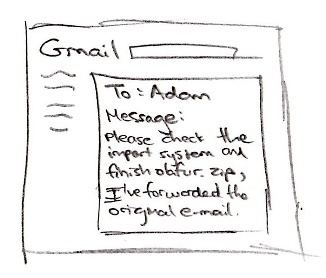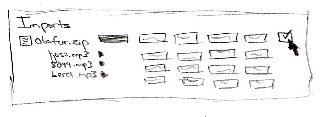Overview of Design
This is a design that focuses on providing users with a clean and efficient interface for importing digital music.
- Motivation: This design focuses on the most critical task of the three identified in GR1 (importing music). We attempt to make importing music as fast and easy as possible for music directors.
- Design Idea: This design uses Dropbox as an inspiration, and focuses on efficiently importing music to the playback library.
- Scope:
...
- The essence of the project is that digital incoming music is mostly being thrown away (deleted)
...
- ; while the other tasks are also helpful, without an efficient and simple way to get digital music into the playback library, the other tasks become irrelevant since they require music to first be in the system at all.
- Pro: By scoping and focusing on the most important of the three, our design covers less breadth in features but focuses on making the critical task
...
- usable and effective.
- Con: The downside here is that we get less experimentation with the other tasks in this design, but we feel it's a reasonable trade-off given the relative importance of tasks.
An overview of the entire interface is shown here, with the scenario play-through in storyboard format below.
Storyboard
Sketch | Explanation |
|---|---|
| Lana energetically arrives at the music studio. After chatting with a fellow music director about some new music for a few minutes, she sits down to check her e-mail. |
| She's surprised to see an e-mail from the record label TerrorMonkey, she hasn't heard from them in months. Two of the albums strike her interest, so she uses the direct download links provided to download them to her desktop. |
| She opens up the KaJaM! interface in her browser, and drags the downloaded files onto the interface. |
| The imported zip files immediately start uploading to the playback library. A pane has risen from the bottom of the interface, showing the import progress of the albums. Lana starts filling in the artist name for one of the zipped albums. |
| Filling the artist name for the zip file automatically populates the same field for each of the album tracks. |
| Afterwards, she replaces the generically named "Track1.mp3", "Track2.mp3", "Track3.mp3" with the real track names from a web search for the album. |
| The upload has completed and Lana has filled out all required fields. A confirmation button is now available to add the album to the library. She clicks it. |
| She realizes she forgot to attach the album artwork, so she scrolls down to the "Recently Filed" section of the interface, and clicks on the attachment icon. |
| The dialog box pops up, and Lana sees that the system has already attached the cover-art automatically. The album artwork must've been included in the zip file. |
| The second album is also done uploading. She plays one of the tracks to get a feel for the new music. She loves it. |
| She looks up at the clock and realizes she is short on time. Lana has to make a radio show in thirty minutes. |
| She forwards the record label e-mail to Adam, her assistant ("elf"). She tells him to check KaJaM!, so that he can finish entering the details and add the album to the playback library. Lana leaves in a hurry to prepare for her show. |
| Later that evening, Adam receives Lana's e-mail at his home computer. Even though he's tired from his Computer Science classes that day, he doesn't mind listening to new music while filling in some album details. He finishes by approving the album into the playback library, to be played at a later date on WMBR 88.1. |
...
